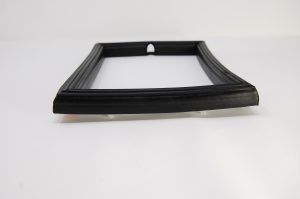Manufacturing waste is any expense or effort that does not transform materials into a product for which a customer is willing to pay. Let’s start with a simple example: lemonade. Customers are willing to pay for a product (the lemonade) where you’ve processed (squeezed) the proper amount of raw materials (lemons) and combined them with just the right amount of sugar and water. Customers are not willing to pay for a product (the lemonade) that is too tart to drink because you’ve added too many lemons.
Now let’s apply some twists to your manufacturing model. Customers aren’t willing to pay more because you forget to buy the right amount of lemons the first time, had to make multiple trips to market, and now want to recoup your travel-related costs. Buyers won’t pay more either because, instead of just stirring the sugar into the lemon juice, you’ve used a stove and your time to make a simple syrup. Your lemonade may be the finest in the land, but there’s only so much that your neighbors are willing to pay.
Your manufacturing operation is a lot like this a lemonade stand. If you don’t reduce waste, you put profitability at risk. Many companies have heard of lean manufacturing, but did you know that there are eight types of manufacturing waste? This article, the first in a series from Elasto Proxy, offers an overview of each. Because our company is known for industrial rubber products, we’ve included a few rubber-related examples from the field.
Transportation
Transporting a product doesn’t add value to it. Consider what can happen to coils of rubber that are used in gasket fabrication.
- Inventory personnel stock shelves with boxes of long lengths.
- Later, pickers move these boxes from stores to the shop floor.
- The boxes are stacked against a wall and eventually moved to where fabrication occurs.
There’s plenty of material movement, but no added value until the gasket fabrication step occurs. Instead, there’s transportation waste.
Inventory
Manufacturers maintain three types of inventory.
- Raw Material Inventory (RMI)
- Work-in-Process (WIP)
- Finished Goods Inventory (FG)
Of these three types, WIP is considered to be the greatest waste because of the costs involved.
Motion
Motion is the movement of people. Workers move to fetch the materials and tools they need to do their jobs. Employees also bend, climb, and twist during activities such as loading and unloading. This causes fatigue and reduces productivity. If a workplace isn’t ergonomic, injuries (such as from gasket cutting) may occur.
Waiting
Waiting occurs whenever workers, machines, or materials require an unavailable resource. The causes of waiting include change-overs, unplanned maintenance, and stock-outs. Waiting add costs to projects, but it can also cause downstream affects like hurried quality checks and missed shipments.
Over-Production
Over-production occurs when manufacturing operations exceed the requirements of downstream processes such as assembly. Instead of producing only what’s needed for the job, workers create a supply for which there isn’t a demand.
Over-Processing
Over-processing is the redundant performance of activities such as handling, counting, and inspection. It can include unnecessary documentation checks, too.
Defects
Defects occur when a product is improperly made and departs from its intended design. For example, a worker may cut extruded rubber with a knife and then bond the cut lengths with glue. If the cuts are jagged and the glue won’t withstand water, the finished gasket won’t provide proper sealing outdoors.
Unused Knowledge
Unused knowledge is also a form of manufacturing waste. Often, unused knowledge is attributed to a lack of teamwork and employee disengagement. Yet it’s also a problem when a highly-skilled employee like a welder is asked to bond rubber gaskets instead of join metal parts.
More About Manufacturing Waste
We hope you’re enjoyed this article, the first in a series from Elasto Proxy. Future articles will contain additional examples of manufacturing waste that we’ve seen in the field. We’ll offer some solutions, too. In the meantime, please feel free to contact us if you’d like to speak to a solutions provider.









